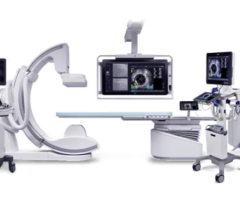June 14, 2013 — Criteria for evaluating operator competency for performing coronary interventions should be expanded beyond procedure volume and include an evaluation of risk-adjusted outcomes, periodic case reviews of patient selection and other factors, according to a new report from the American College of Cardiology (ACC), the American Heart Association (AHA) and the Society for Cardiovascular Angiography and Interventions (SCAI).
The medical societies released a joint statement to outline the core competencies and technical skills required to optimize clinical outcomes when performing coronary-based interventions. This new report — an update to the initial 2007 statement — responds to challenges presented by the changing landscape of the interventional cardiology field and evolving views on how best to define and assess clinical competency specifically related to percutaneous coronary intervention (PCI) and other coronary-based interventions in adult patients.
Outlined in the revised document are new and adjusted benchmarks to assist with measuring and judging operator and institution performance of coronary-related procedures. PCI is now widely practiced and is an integral part of contemporary cardiovascular therapy. More than 600,000 coronary interventional procedures are performed annually in the United States. While there has been a decline in the number of procedures performed in the last decade, these interventions continue to evolve and are being performed in more complex, often sicker patient populations. Because of dramatic advances in PCI, including new technological innovations and its expanded use to treat increasingly complex types of coronary artery disease, clinicians and hospitals must stay current through practice-based learning, formalized training and continuing education.
“We can’t be in every cath lab across the country, so one way to track competency is to define and measure key outcomes,” said Theodore A. Bass, M.D., cardiovascular division chief and medical director of the University of Florida Shands Cardiovascular Center in Jacksonville, Fla., vice chair of the writing committee and president of the Society for Cardiovascular Angiography and Interventions. “In the past, we focused mostly on cognitive competency — what does someone know. But when we talk about procedurally based skills, competency also involves the actual performance of the procedure. Practicing physicians and hospitals need to assure that these skill sets and support systems are in place to facilitate delivering optimal care to our patients.”
Procedural volume — the number of times an individual physician or institution performs PCI — has been widely used as a surrogate for competency; this implies that higher volumes are associated with greater success rates in PCI, most notably, improved clinical outcomes. While historically volume has served as a useful measure, Bass cautions that it is “not the be-all-end-all.” Consequently, institutional and operator volume measures have been revised in the current report to be more compatible with current practice patterns, societal needs, and patient accessibility to coronary interventions and cath labs keeping in mind desired clinical quality outcomes.
The process of evaluating physicians’ knowledge and skills has become more complex as procedures continue to advance, Bass said. The report provides a roadmap for what is desirable in terms of clinical experience and skill sets.
“It’s not simply a matter of how many are being done or whether we are putting the stent in the right place. It’s also about our ability to appropriately select patients and, once selected, deliver safe care with optimal outcomes,” said Bass.
John Gordon Harold, M.D., MACC, president of the ACC and chair of the writing committee, said the document goes beyond volume and focuses on competency or outcome-based training and performance requirements.
“It is the first cardiovascular competency statement to fully utilize the six domains structure promulgated by the Accreditation Council of Graduate Medical Education and adopted and endorsed by the American Board of Internal Medicine,” Harold said. “It goes beyond medical knowledge and procedure performance, to include the important issues of leading an interdisciplinary team, working in a complex system, communicating effectively, engaging in continuous quality improvement at the individual and system levels, adhering to evidence-based medicine and demonstrating the highest levels of professionalism.”
Bass said other basic tenets of clinical competency should come into play. For example, good clinical decision making, the ability to provide optimal health care in a resource-conscious way, clear communication with patients about the risks and benefits of procedures, participation in continuous quality improvement efforts, achieving and maintaining board certification and taking advantage of new tools including internet-based education, just to name a few.
“We hope this report will be used as a tool to help health care systems and physicians provide the best possible care to patients receiving coronary-based interventions,” Bass said. “It reflects a greater appreciation of the multiple dimensions shaping physician competency and provides much broader guidance in these areas.”
In addition to addressing components of physician competence, which is at the core of providing quality health care, the document provides facilities with or seeking PCI programs with recommendations to meet certain requirements, closely monitor clinical outcomes and provide quality assurance. The present document also assesses the use of coronary-based procedures in patients with structural disease. The report also recommends participation in local or national registries to measure performance and promote continued quality improvement.
The full text of this report will be published in the June 11, 2013, issue of the Journal of the American College of Cardiology and co-published online in Circulation: Journal of the American Heart Association and online in Catheterization and Cardiovascular Interventions (CCI), the journal of The Society for Cardiovascular Angiography and Interventions. The document will also be available on the ACC, AHA, and SCAI websites.
For more information: www.cardiosource.org, www.americanheart.org, www.scai.org


 December 20, 2023
December 20, 2023 








